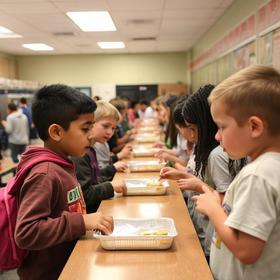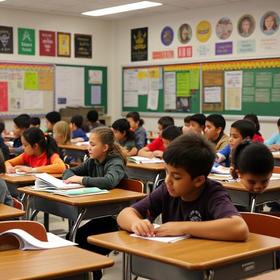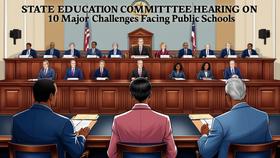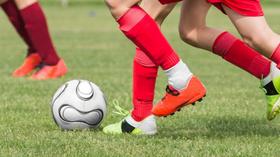Top Rankings
Snoqualmie Valley School District ranks among the top 20% of public school district in Washington for:
Category
Attribute
Overall Rank
Highest overall rank (Top 5%)
Math Proficiency
Highest math proficiency (Top 5%)
Reading/Language Arts Proficiency
Highest reading/language arts proficiency (Top 5%)
Science Proficiency
Highest science proficiency (Top 5%)
Graduation Rate
Highest graduation rate (Top 1%)
Community Size
Largest student body (number of students) (Top 1%)
For the 2025-26 school year, there are 13 public schools serving 7,161 students in Snoqualmie Valley School District. This district's average testing ranking is 10/10, which is in the top 5% of public schools in Washington.
Public Schools in Snoqualmie Valley School District have an average math proficiency score of 65% (versus the Washington public school average of 41%), and reading proficiency score of 77% (versus the 53% statewide average).
The top ranked public schools in Snoqualmie Valley School District are Snoqualmie Elementary School, Cascade View Elementary School and Fall City Elementary School. Overall testing rank is based on a school's combined math and reading proficiency test score ranking. Snoqualmie Valley School District has one of the highest concentrations of top ranked public schools in Washington.
Minority enrollment is 30% of the student body (majority Asian and Hispanic), which is less than the Washington public school average of 52% (majority Hispanic).
Overview
This School District
This State (WA)
# Schools
13 Schools
2,563 Schools
# Students
7,161 Students
1,102,093 Students
# Teachers
392 Teachers
62,276 Teachers
Student-Teacher Ratio
18:1
18:1
Student By Grade
District Rank
Snoqualmie Valley School District, which is ranked within the top 5% of all 306 school districts in Washington (based off of combined math and reading proficiency testing data) for the 2022-2023 school year.
The school district's graduation rate of 96% has increased from 93% over five school years.
Overall District Rank
#7 out of 307 school districts
(Top 5%)
(Top 5%)
Math Test Scores (% Proficient)
65%
41%
Reading/Language Arts Test Scores (% Proficient)
77%
53%
Science Test Scores (% Proficient)
74%
49%
Graduation Rate
96%
84%
Students by Ethnicity:
Diversity Score
0.49
0.69
% American Indian
1%
1%
% Asian
10%
9%
% Hispanic
10%
26%
% Black
1%
5%
% White
70%
48%
% Hawaiian
n/a
2%
% Two or more races
8%
9%
All Ethnic Groups
District Revenue and Spending
The revenue/student of $19,980 is higher than the state median of $18,796. The school district revenue/student has stayed relatively flat over four school years.
The school district's spending/student of $18,418 is less than the state median of $19,247. The school district spending/student has stayed relatively flat over four school years.
Total Revenue
$143 MM
$20,715 MM
Spending
$132 MM
$21,212 MM
Revenue / Student
$19,980
$18,796
Spending / Student
$18,418
$19,247
Best Snoqualmie Valley School District Public Schools (2025-26)
School
(Math and Reading Proficiency)
(Math and Reading Proficiency)
Location
Quick Facts
Rank: #11.
Snoqualmie Elementary School
(Math: 84% | Reading: 81%)
Rank:
Rank:
10/
Top 5%10
755 Park St
Snoqualmie, WA 98065
(425) 831-8050
Snoqualmie, WA 98065
(425) 831-8050
Gr: PK-5 | 496 students Student-teacher ratio: 15:1 Minority enrollment: 37%
Rank: #22.
Cascade View Elementary School
(Math: 81% | Reading: 81%)
Rank:
Rank:
10/
Top 5%10
34816 Se Ridge Street
Snoqualmie, WA 98065
(425) 831-4100
Snoqualmie, WA 98065
(425) 831-4100
Gr: K-5 | 525 students Student-teacher ratio: 18:1 Minority enrollment: 30%
Rank: #33.
Fall City Elementary School
(Math: 75% | Reading: 81%)
Rank:
Rank:
10/
Top 5%10
33314 Se 42
Fall City, WA 98024
(425) 831-4000
Fall City, WA 98024
(425) 831-4000
Gr: K-5 | 475 students Student-teacher ratio: 15:1 Minority enrollment: 25%
Rank: #44.
North Bend Elementary School
(Math: 71% | Reading: 79%)
Rank:
Rank:
10/
Top 10%10
400 E Third St
North Bend, WA 98045
(425) 831-8400
North Bend, WA 98045
(425) 831-8400
Gr: K-5 | 464 students Student-teacher ratio: 15:1 Minority enrollment: 25%
Rank: #55.
Timber Ridge Elementary School
(Math: 72% | Reading: 76%)
Rank:
Rank:
10/
Top 10%10
34412 Se Swenson Dr
Snoqualmie, WA 98065
(425) 831-3825
Snoqualmie, WA 98065
(425) 831-3825
Gr: K-5 | 624 students Student-teacher ratio: 16:1 Minority enrollment: 45%
Rank: #66.
Chief Kanim Middle School
(Math: 65% | Reading: 75%)
Rank:
Rank:
9/
Top 20%10
32627 Se Redmond Fall City R
Fall City, WA 98024
(425) 831-8225
Fall City, WA 98024
(425) 831-8225
Gr: 6-8 | 534 students Student-teacher ratio: 18:1 Minority enrollment: 34%
Rank: #77.
Mount Si High School
(Math: 54% | Reading: 89%)
Rank:
Rank:
9/
Top 20%10
8651 Meadowbrook Way Se
Snoqualmie, WA 98065
(425) 831-8100
Snoqualmie, WA 98065
(425) 831-8100
Gr: 9-12 | 2,172 students Student-teacher ratio: 22:1 Minority enrollment: 29%
Rank: #88.
Snoqualmie Middle School
(Math: 60% | Reading: 77%)
Rank:
Rank:
9/
Top 20%10
9200 Railroad Ave Se
Snoqualmie, WA 98065
(425) 831-8450
Snoqualmie, WA 98065
(425) 831-8450
Gr: 6-8 | 495 students Student-teacher ratio: 19:1 Minority enrollment: 28%
Rank: #99.
Edwin R Opstad Elementary School
(Math: 74% | Reading: 67%)
Rank:
Rank:
9/
Top 20%10
1345 Stilson Ave Se
North Bend, WA 98045
(425) 831-8300
North Bend, WA 98045
(425) 831-8300
Gr: K-5 | 563 students Student-teacher ratio: 17:1 Minority enrollment: 22%
Rank: #1010.
Snoqualmie Parent Partnership Program
Alternative School
(Math: 50-54% | Reading: 75-79%)
Rank:
Rank:
9/
Top 20%10
9200 Railroad Ave Se
Snoqualmie, WA 98065
(425) 831-8440
Snoqualmie, WA 98065
(425) 831-8440
Gr: K-12 | 195 students Minority enrollment: 28%
Rank: #1111.
Twin Falls Middle School
(Math: 50% | Reading: 68%)
Rank:
Rank:
8/
Top 30%10
46910 S.e. Middle Fork Road
North Bend, WA 98045
(425) 831-4150
North Bend, WA 98045
(425) 831-4150
Gr: 6-8 | 542 students Student-teacher ratio: 19:1 Minority enrollment: 27%
Rank: #1212.
Two Rivers School
(Math: <50% | Reading: ≥50%)
Rank:
Rank:
7/
Top 50%10
8651 Meadowbrook Way Se
Snoqualmie, WA 98065
(425) 831-4200
Snoqualmie, WA 98065
(425) 831-4200
Gr: 9-12 | 60 students Student-teacher ratio: 9:1 Minority enrollment: 9%
Rank: #1313.
Snoqualmie Access
Special Education School
(Math: <50% | Reading: ≥50% )
Rank:
Rank:
5/
Bottom 50%10
8001 Silva Ave Se
Snoqualmie, WA 98065
(425) 831-8015
Snoqualmie, WA 98065
(425) 831-8015
Gr: PK-12 | 16 students Minority enrollment: 37%
Frequently Asked Questions
How many schools belong to Snoqualmie Valley School District?
Snoqualmie Valley School District manages 13 public schools serving 7,161 students.
What is the rank of Snoqualmie Valley School District?
Snoqualmie Valley School District is ranked #6 out of 306 school districts in Washington (top 5%) based off of combined math and reading proficiency testing data for the 2022-2023 school year. This district ranks in the top 20% of Washington school districts for: Highest overall rank (Top 5%), Highest math proficiency (Top 5%), Highest reading/language arts proficiency (Top 5%), Highest science proficiency (Top 5%), Highest graduation rate (Top 1%) and Largest student body (number of students) (Top 1%)
What is the racial composition of students in Snoqualmie Valley School District?
70% of Snoqualmie Valley School District students are White, 10% of students are Asian, 10% of students are Hispanic, 8% of students are Two or more races, 1% of students are American Indian, and 1% of students are Black.
What is the student/teacher ratio of Snoqualmie Valley School District?
Snoqualmie Valley School District has a student/teacher ratio of 18:1, which is equal to the Washington state average of 18:1.
What is Snoqualmie Valley School District's spending/student ratio?
The school district's spending/student of $18,418 is less than the state median of $19,247. The school district spending/student has stayed relatively flat over four school years.
Recent Articles

How Public Schools Support Students on Free / Reduced-Lunch Programs
Explore how U.S. public schools support students eligible for free or reduced-price lunch through nutrition, academic, and wraparound services in 2025.

Hidden Costs of Public Schools: Fees, Supplies & Extras
Explore the hidden costs in public schools—fees, supplies, extracurriculars—and how parents can plan for them in 2025.

Public School Funding 2025: What Families Should Know
Essential insights on public school funding in 2025—how it works, what’s changing, and what families should know to stay ahead.





